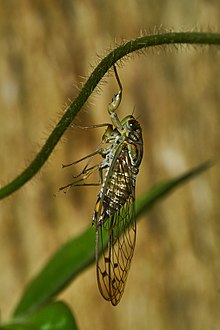
Acraea terpsicore, the tawny coster, is a small, 53–64 millimetres (2.1–2.5 in), leathery-winged butterfly common in grassland and scrub habitats. It belongs to the Nymphalidae or brush-footed butterfly family. It has a weak fluttery flight. It is avoided by most insect predators. This species and the yellow coster are the only two Indian representatives of the predominantly African tribe Acraeini. It is found in India, Sri Lanka, Maldives to Myanmar, Thailand, Laos, Cambodia, Vietnam, Bangladesh, Singapore, and recently Australia

Ariadne merione, the common castor, is an orange butterfly with brown lines whose larvae feed almost exclusively on castor. It is similar in appearance to Ariadne ariadne, the angled castor.
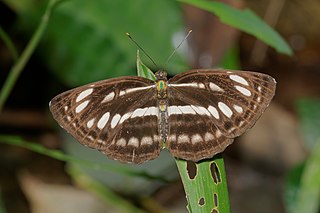
Neptis hylas, the common sailor, is a species of nymphalid butterfly found in the Indian subcontinent and southeast Asia. It has a characteristic stiff gliding flight achieved by short and shallow wingbeats just above the horizontal.

Papilio buddha, the Malabar banded peacock, is a species of swallowtail butterfly found in the Western Ghats of India. The Government of Kerala declared it as the official Kerala state butterfly.
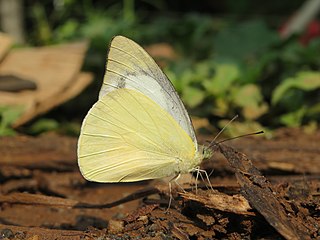
Appias albina, the common albatross, is a small butterfly of the family Pieridae. It is found in south and southeast Asia to Australia.

Cethosia cyane, the leopard lacewing, is a species of heliconiine butterfly found from India to southern China, and Indochina. Its range has expanded in the last few decades, and its arrival in the southern part of the Malay Peninsula, including Singapore, is relatively recent.

Euchrysops cnejus, the gram blue, is a small butterfly that belongs to the lycaenids or blues family. It is found from India to Australia. The species was first described by Johan Christian Fabricius in 1798.

Jamides celeno, the common cerulean, is a small butterfly found in Indomalayan realm belonging to the lycaenids or blues family. The species was first described by Pieter Cramer in 1775.

Symbrenthia lilaea, the peninsular jester, is a species of nymphalid butterfly found in South Asia and Southeast Asia. It forms a superspecies with Symbrenthia hippoclus. There are numerous regional forms, and the taxonomy of the group is not well resolved.
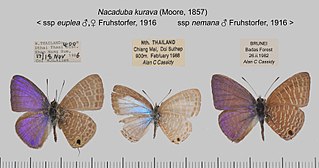
Nacaduba kurava, the transparent six-line blue, is a Lycaenidae butterfly found in Asia and Australia. The species was first described by Frederic Moore in 1857.

The Indian fritillary is a species of butterfly of the nymphalid or brush-footed family. It is usually found from south and southeast Asia to Australia.

Cyrestis thyodamas, the common map, is a species of butterfly in the family Nymphalidae. It was first described by Jean Baptiste Boisduval in 1836. It is found in the Indian subcontinent and Southeast Asia.
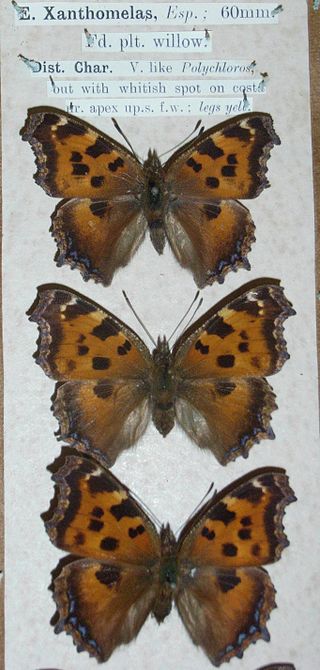
Nymphalis xanthomelas, the scarce tortoiseshell, is a species of nymphalid butterfly found in eastern Europe and Asia. This butterfly is also referred as yellow-legged tortoiseshell or large tortoiseshell.

Thyas coronata is a species of moth of the family Erebidae first described by Johan Christian Fabricius in 1775. It is found from the Indo-Australian tropics of southern China, Taiwan, Japan, Nepal, India, Sri Lanka to Micronesia and the Society Islands.

Gomphurus externus, the plains clubtail, is a species of dragonfly in the family Gomphidae.

Indolestes tenuissimus is a species of damselfly in the family Lestidae, commonly known as the slender reedling. It is found in north-eastern Australia, New Guinea and on Aru.

Euphaea fraseri, Malabar torrent dart, is a species of damselfly in the family Euphaeidae. This species is endemic to the Western Ghats; known to occur in various locations up to Goa.

Lestes dorothea or Forest Spreadwing is a damselfly species in the family Lestidae. It is distributed from south and northeast India to Thailand and Malaysia.

Dundubia vaginata is the type species in its genus, sometimes called the jade-green cicada in the tribe Dundubiini.
Anisocentropus krampus is a species of caddisfly in the family Calamoceratidae. It was described in 1994 by Austrian entomologist Hans Malicky and found in New Britain.




